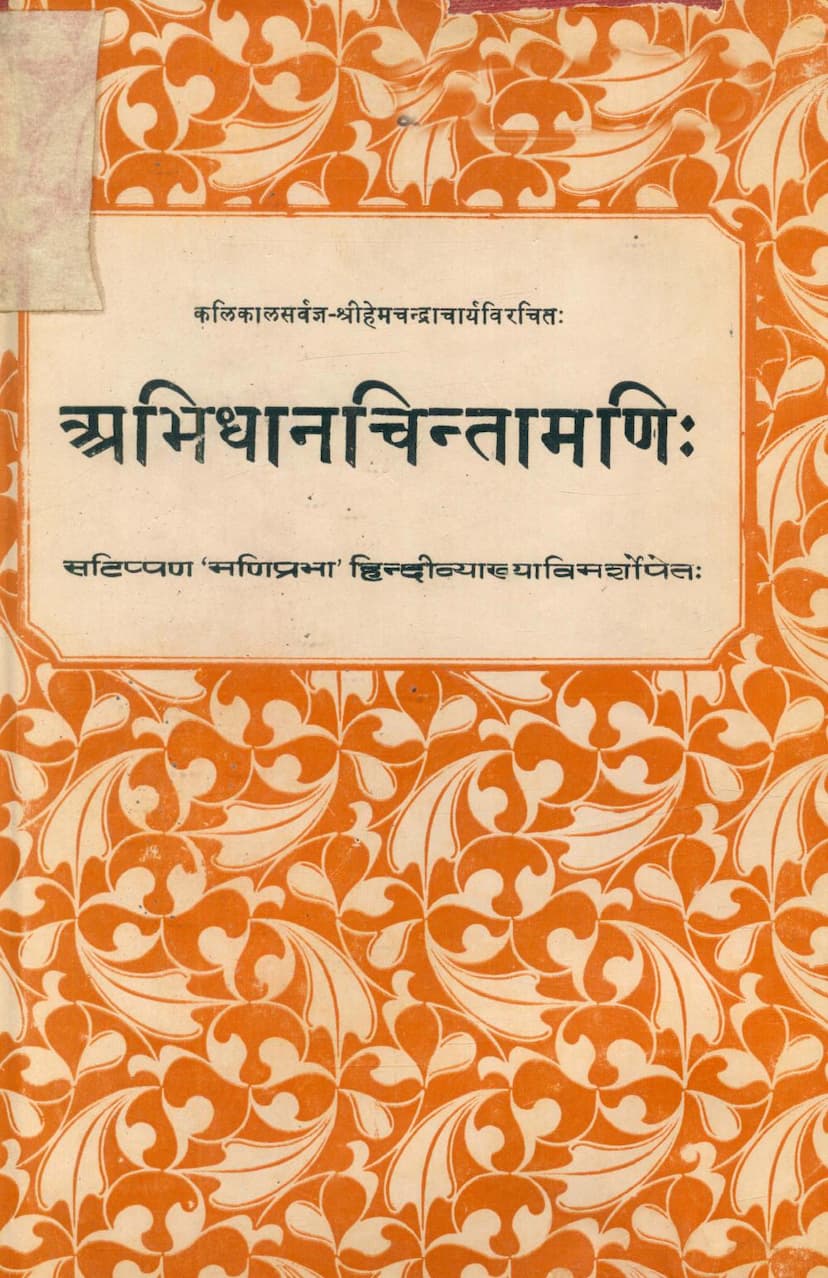Abhidhan Chintamani
Added to library: September 1, 2025

Summary
Certainly, here's a comprehensive summary of the Jain text "Abhidhan Chintamani" based on the provided information, focusing on its content and significance:
Abhidhan Chintamani: A Comprehensive Jain Lexicon
Author(s): Hemchandracharya, Nemichandra Siddhant Chakravarti, Hargovind Shastri (Commentator)
Publisher: Chaukhamba Vidyabhavan, Varanasi
Overview:
"Abhidhan Chintamani," authored by the renowned Jain scholar and polymath Hemchandracharya, is a significant Sanskrit lexicon that serves as a treasure trove of Jain terminology, philosophical concepts, and cultural references. The provided text highlights a Hindi commentary named 'Maniprabha' by Hargovind Shastri and an introduction by Dr. Nemichandra Shastri. This edition, published by Chaukhamba Vidyabhavan, aims to make this valuable text accessible to a wider audience, particularly through its Hindi commentary and analysis.
Key Features and Content:
-
Lexical Significance: The primary purpose of "Abhidhan Chintamani" is to systematically collect and define words. As a lexicon, it aims to organize and explain the vast vocabulary of Sanskrit, which is essential for understanding not only language but also the cultural and intellectual development of a nation. The text emphasizes that a well-organized lexicon makes "dead" or unused vocabulary useful and "lively."
-
Importance of Koshas (Lexicons): The text's introduction, attributed to Dr. Nemichandra Shastri, elaborates on the crucial role of lexicons in language and culture. It likens an unorganized word collection to hidden treasure that yields no benefit, whereas a well-compiled lexicon unlocks this potential. Lexicons are presented as vital for understanding the nuances of words, their various meanings, and their proper usage, which is indispensable for literary appreciation and the correct apprehension of philosophical and religious texts.
-
Hemchandracharya's Contribution: The text provides biographical context for Hemchandracharya, a highly influential scholar of the 12th century. It highlights his multifaceted genius, his impact on Gujarati culture and history, and his extensive literary output across various fields like grammar, poetry, logic, and Jain scriptures. His work is described as illuminating various aspects of literature, culture, and history.
-
Structure of Abhidhan Chintamani: The provided table of contents reveals a structured approach to the lexicon. It is divided into six "Kandas" (sections):
- First Kand (Devadidevakanda): Deals with epithets of the supreme divine beings (likely referring to the Tirthankaras in Jainism).
- Second Kand (Devakanda): Focuses on deities and celestial beings.
- Third Kand (Martyakanda): Encompasses terms related to human beings and their various aspects.
- Fourth Kand (Tiryakakanda): Covers terms related to animals and beings in the lower realms or forms of existence. It further breaks down into descriptions of various types of living beings based on their number of senses and elemental classification (earth, water, fire, air, plants).
- Fifth Kand (Narakakanda): Deals with terms related to the hellish realms.
- Sixth Kand (Samanyakanda): Covers general terms, including abstract concepts, grammatical categories like indeclinables, and likely other miscellaneous words.
-
Commentary by Hargovind Shastri: The presence of the 'Maniprabha' Hindi commentary by Hargovind Shastri is a significant aspect of this edition. This commentary aims to provide Hindi explanations for the original Sanskrit verses, clarify difficult concepts, and offer linguistic and contextual insights, making the work more accessible to Hindi-speaking readers.
-
Historical Context of Sanskrit Lexicography: The introduction traces the history of Sanskrit lexicography, mentioning early works like Baguri's "Trikanda" and the prominent "Amarakosa" by Amarasimha. It positions Hemchandracharya within this rich tradition, highlighting his contributions like "Abhidhan Chintamani," "Anekartha Sangraha," "Nighantu Shesha," and "Deshi Nama Mala."
-
Inclusion of 'Shesha' and 'Vimarsh' notes: The table of contents also indicates the inclusion of 'Shesha' (remaining or supplementary words) and 'Vimarsh' (discussion or notes) related to the text and its commentary. This suggests a depth of analysis and an effort to provide exhaustive information.
-
Linguistic and Cultural Richness: The text highlights Hemchandracharya's method of creating compound words based on convention ("Kavirudhya Jneyodaharanaavali"), a unique approach that enriches the vocabulary and demonstrates his linguistic skill. The mention of "Deshi Nama Mala" also points to the inclusion of vernacular or regional terms.
Significance:
"Abhidhan Chintamani" is not merely a dictionary; it is a scholarly work that reflects the encyclopedic knowledge of Hemchandracharya. For Jain scholars and practitioners, it is an invaluable resource for understanding the specific terminology used in Jain scriptures and philosophy. Its comprehensive nature, covering various realms of existence and diverse aspects of life, makes it a window into ancient Indian knowledge systems and a testament to the advanced state of Sanskrit lexicography during Hemchandracharya's time. The detailed commentary in this edition further enhances its utility, making the profound insights of this Jain text accessible to a contemporary audience.